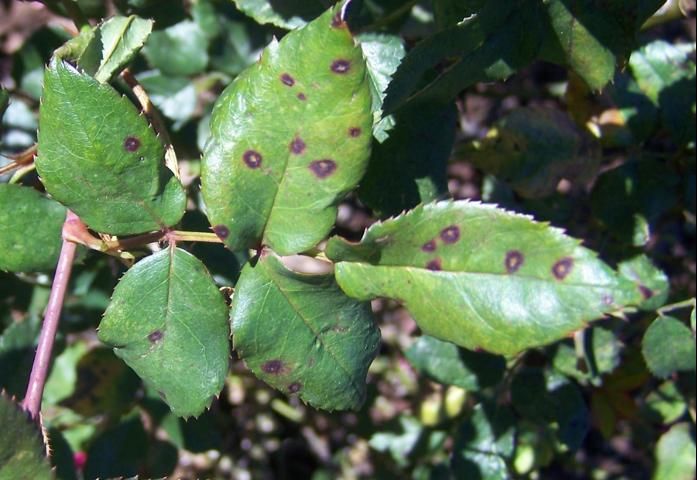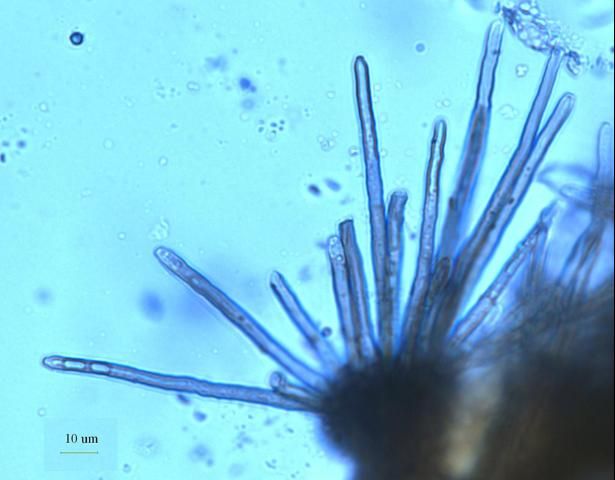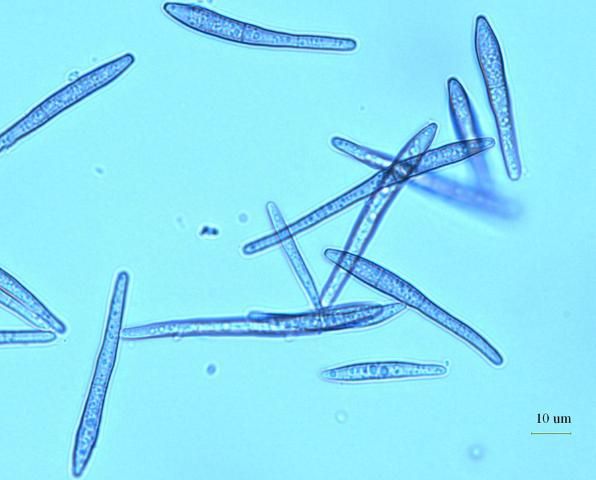Introduction
The primary foliar diseases of roses are black spot (caused by Diplocarpon rosae), powdery mildew (caused by Podosphaera pannosa), and Cercospora leaf spot (caused by Cercospora rosicola). Cercospora leaf spot has been little investigated, especially on varieties that belong to the groups of shrubs and ground cover roses. Although C. rosicola commonly affects roses, its impact is reduced when control measures for diseases such as black spot and powdery mildew is conducted. Other fungi such as Alternaria alternata, Colletotrichum capsici, and Glomerella cingulata can also cause leaf spots on roses.
Causal Agent and Geographical Distribution
Fungi of the genus Cercospora are parasitic and infect a broad range of herbaceous plants. The main species affecting roses is Cercospora rosicola (Mycosphaerella rosicola, sexual stage). C. rosicola is distributed worldwide and was first reported on rose leaves in Florida in 1885.
Symptoms
Cercospora leaf spot is a disease often confused with black spot. Both diseases cause severe defoliation in heavily infected plants. The infection starts from the bottom of the canopy and progresses towards the tips where new growth is present. Lesions are primarily found in leaves but also in pedicels, stems, fruits, and bracts. (See EDIS publication Black Spot of Rose at https://edis.ifas.ufl.edu/PP268).
Symptoms of Cercospora leaf spot are circular spots usually 2–4 mm in diameter, but single spots can be as large as 10 mm in diameter (Figures 1a, 1b). The size is variable depending on the species or cultivar on which the lesions occur. When symptoms begin to appear, a small purplish area becomes apparent. In older lesions a small necrotic area develops and increases in size as the disease progress (Figure 1b). At this point, the center of the spots turns tan to almost gray as the cells become brown and die.

Credit: J. Mangandi, UF/IFAS

Credit: J. Mangandi, UF/IFAS
In advanced necrotic lesions, groups of small tufts of conidiophores can be found. Conidiophores develop from masses of fungal tissue called stroma (Figure 2a). Stromata are dark brown and appear as black dots over the necrotic area of the leaves. Under the microscope, cylindrical, almost straight, septate conidia can be observed (Figure 2b).

Credit: J. Mangandi, UF/IFAS

Credit: J. Mangandi, UF/IFAS
Control
Research trials have shown that Cercospora leaf spot is not significant when programs to control black spot and powdery mildew are used. Of twenty-five rose cultivars tested in Alabama, differences in susceptibility to black spot and Cercospora leaf spot were observed. All cultivars were susceptible to both diseases, predominantly black spot, but only two cultivars, Petite Pink Scotch and The Fairy, showed persistent, severe symptoms of Cercospora leaf spot.
The shrub rose 'Fuchsia Meidiland'® was reported as a susceptible cultivar in Alabama and North Carolina. In an experiment conducted to evaluate commercial fungicides for the control of Cercospora leaf spot in this cultivar, it was concluded that products such as Compass™ and Daconil Ultrex® applied weekly as well as Eagle® and Heritage® applied twice monthly reduced severity of this disease to just few spots on the lower leaves.
Scheduled applications used to control black spot with fungicides such as Daconil Weather Stik®, Immunox®, and Halt® also provide control of Cercospora leaf spot. Fungicides labeled for control of Cercospora leaf spot of roses in Florida are listed in Tables 1, 2, and 3. For managing fungicide resistance, products with different modes of action should be used in rotations. All fungicides within the same group (with same number or letter) indicate the same active ingredient or similar mode of action. Fungicide resistance is usually low with multi-site inhibitor fungicides (group M).
Table 1. Fungicide products marketed for use by professional pesticide applicators for control of Cercospora leaf spot on roses.